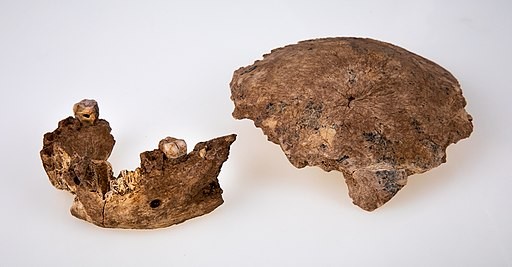Populations genetically related to modern humans first appeared in Europe at some point in history about 38,000 - 40,000 years ago. It is believed that these new migrants replaced the pre-existing modern human species in the region. However, experts are still baffled as to how Homo sapiens arrived in Western Europe.

Finding Clues in Skull Fragments
In a new study by E. Andrew Bennett, researchers analyzed two skull fragments dating from 37,000 to 36,000 years ago. The skulls were discovered at an archeological site in the Crimea, Buran Kaya III in 2009. Together with lithic tools and pierced mammoth ivory beads, the human remains bear witness to the presence of anatomically modern human species in Eastern Europe.
The analysis allowed the research team to generate a broad, up-to-date model of human population movements, interactions, and replacements as they settled in Europe during the Upper Paleolithic. These individuals are also the oldest representatives of Western Europeans who were established permanently in Europe and left traces in the genomes of modern-day Europeans.
Scientists speculate that these human species settled in the region after the ice age from 40,000 to 38,000 years ago. Aside from extremely low temperatures, this period is also marked by the eruption of a super-volcano in the Phlegrean Fields region near Naples, which left Europe's south-eastern and eastern regions covered in ash.
Archeologists believe the resulting ecological crisis wiped out the last Neanderthal populations and the first populations of early modern humans of the Upper Paleolithic period. The latter became the descendants of Homo sapiens species, which emerged from Africa around 60,000 years ago and left archeological remains in Europe from 45,000 years ago or even earlier.
This period marked the transition between the Middle Paleolithic and Upper Paleolithic when the first Homo sapiens replaced the last Neanderthals. Although their skeletal remains are rare, those found in Bulgaria, Romania, and Czech Republic archeological sites have had their genomes partially decoded.
READ ALSO: Genome Sequencing Traces the Lineage of Early Humans; Is It Time to Reconsider Our Origin?
Result of Interbreeding
The information obtained by the researchers from the two skull fragments discovered in the Buran Kaya III site is fragmentary. Still, scientists could compare it against 740,000 genetic variations shared with the genomes of other ancient populations. This number is already sufficient to identify their affinities and shared ancestry.
Although the two fragments are thought to be 700 years apart from one another, the paleogenomic analysis of the skulls suggests that they were part of the second wave of European settlement by Homo sapiens which took place after the ecological crisis. Both individuals are descendants of distant interbreeding with Neanderthals.
Experts believe that the more recent individual bore traces of interbreeding with individuals from the first wave of European settlement which were thought to have been exterminated during the ice age. From this assumption, they conclude that the first Homo sapiens were not completely replaced, and may even have survived the ecological crisis.
Times.
RELATED ARTICLE: Extinction of Europe's First Humans, Homo Erectus Due to Severe Cooling Event 1.1 Million Years Ago, Study Reveals
Check out more news and information on Early Modern Humans in Science Times.














